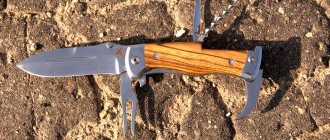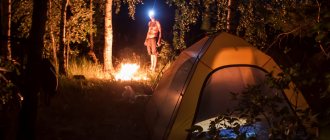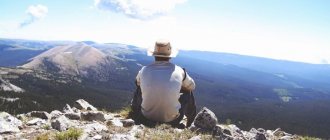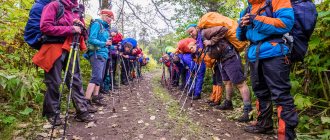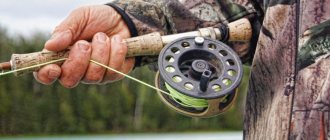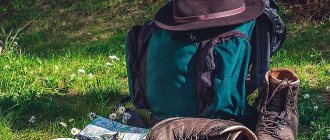14.02.2019
More than bears and calluses, many novice tourists and travelers are concerned with the question: “How to go to the toilet in the forest?” Relax, this is what man has been doing for thousands of years. However, first you must do the following:
Research the
No Trace .
The best thing you can do for your fellow hikers is to leave the land as clean, or cleaner, than it was before you arrived.
Find out if the area you are camping in has any additional regulations regarding human waste disposal.
Apart from this, there are a number of important recommendations that need to be followed, so let's dive deeper into this issue.
How to relieve yourself in the wild
Choose a location that is well away from the trail or campsite. The group may designate separate areas for men's and women's "restrooms." When choosing a location, also consider what area you are in:
- Shallow bodies of water:
Never relieve yourself directly in a small pond, stream or lake. Always move at least 60 meters (approximately 70 steps) from any water source. - Alpine areas:
High in mountain goat territories, it is recommended to urinate on the rock surface. Goats are attracted to salts in urine, so they can damage fragile vegetation in their quest to dig them up.
Hiking cosmetic bag, list
- Shampoo. Calculate approximately how many times you plan to wash your hair, but be realistic. Washing your hair every day while hiking is a utopia. Most likely, you will be able to wash your hair no more often than after 2-3 days. It’s better to take shampoo in bags, it’s more convenient and won’t accidentally spill all over your backpack. Based on this, buy the required volume and a couple of bags in reserve.
- Soap. If you are used to shower gels, then we recommend taking soap on your hike. Bar soap is more economical and weighs less. In addition, bar soap is more convenient for routine washing of socks.
- Hand cream and hygienic lipstick. Cream is a necessary thing on a hike. The sun, wind, washing dishes in the river, all this creates stress for the skin of the hands. It is best to take regular baby cream in the smallest tube. Lipstick will protect your lips from windy weather and hot sun rays.
- Sun cream. If we are talking about a mountain hike, then sunscreen is an essential item. Tight, red facial skin is a very unpleasant sensation when hiking. Yes, and in general, on a hot summer day you can easily get sunburned. Take care of your skin, don't forget this important product at home.
- We take toothpaste in the smallest packaging. If you have half a tube of paste at home, take it.
- Toilet paper. There is such a living joke: judging by how much activated carbon and toilet paper tourists take with them on a hike, it seems that they go there precisely for this.) You should not take packaging with you, but be sure to take one roll and be sure to place it in the bag so it doesn't get damp!
- Wet wipes. It is better to give preference to children's ones, they are hypoallergenic. Feel free to take several packs, they will always come in handy.
- Deodorant is a necessary thing, but again, take it in a small container, not glass. The perfume department sells mini deodorants.
- Panty liners for every day are a good invention; it allows you not to carry a lot of underwear with you. Stress, possible hypothermia, climate change, everything can provoke an unexpected “surprise”. Just in case, take personal hygiene products with you.
- Tweezers and nail file. Tweezers are the first assistant in removing splinters. A nail file is not necessary; it is best to go camping with short-cut nails; a beautiful manicure on a camping trip looks untidy by the evening of the first day.
- Towel. The size of the towel should be small. It is better if it is a small waffle towel. Terry towels take a long time to dry and weigh a lot.
- Comb. Of course, your own comb is more common, but if it can be replaced with a smaller one, it is better to replace it.
Tips for women
Below are some useful tips especially for ladies. If possible, find a soft area of soil that absorbs moisture quickly (pine needles work great).
- When going on a day hike, bring a couple of packs of toilet paper or tissues and a small plastic ziplock bag. Place the used paper in a bag and throw it in the trash when you return.
- If privacy is not an option, use a light sarong, towel, or hiking skirt wrapped loosely around you as cover. If you go on a hike with someone, that person can keep an eye on the surrounding area and alert you if other hikers appear.
How to wash in a cauldron
Ingenuity is everything. After waiting for the attendants to clean the boiler from the burnt buckwheat, I boiled water in it and went to the stream. By diluting boiling water with cold water in a second cauldron and pouring from a deep bowl, I managed to wash my hair and body. What a thrill! Half a pot of boiling water was enough for me. True, I went to bed already after midnight.
+ Warm. The method is suitable for days where you can dry your hair before going to bed.
- For a long time. The shampoo does not wash out well in soft water. Suitable only for camping trips.
It is better to take an assistant with you who will pour water on you.
How to walk in the wild when you need it
Before you go on a hike, make sure you have everything you need and are familiar with all the correct techniques.
Consumables:
In addition to the essentials—toilet paper and hand sanitizer—it's worth bringing a
Camp Scoop:
This typically weighs very little, but will be extremely useful when you need to dig a hole.
Find a suitable location:
- Carry all your supplies within 60 meters (70 steps) of the trail, campsite, or water source. For privacy, choose bushland. Be sure to pay attention to your surroundings so you can navigate back to your campsite or hiking trail.
- If possible, choose an area with soft, loose soil that is sunny. Both of these conditions contribute to faster decomposition of waste. Using a shovel, stick, stone or boot heel, dig a small hole approximately 10 centimeters wide and 15-20 cm deep.
- If the ground is so hard or rocky that you can't dig, try removing some rock and using the exposed area. After you have done all your work, put the stone back in place. Or put all waste in a special bag.
Toilet on a camping trip: how to organize it properly
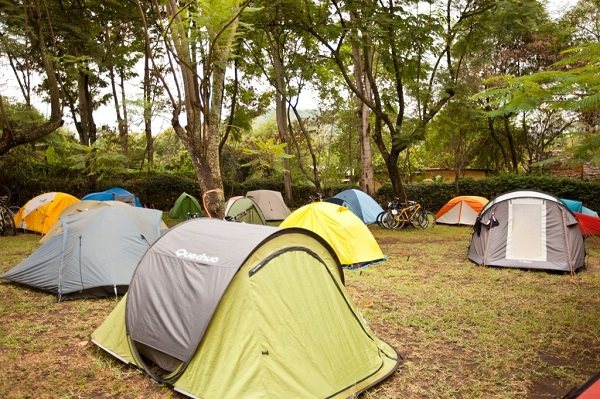
A toilet on a camping trip is a vital thing and, although many people think that it can be organized under any bush, this is an erroneous and uncivilized opinion. The ecological purity of nature is very important, therefore the organization of a parking lot should always include the competent organization of a camp toilet. If you do not want to pollute the environment with waste from your life or get pain after going to the toilet in the form of cystitis, be sure to read the rules for discharging your needs in nature.

Basic rules of hygiene while hiking
Never go camping without toilet paper and a garden trowel so you can dig a hole to relieve yourself. A camp toilet should be organized at a distance of 50-100 meters from your parking lot, making sure that there are no ponds, paths or slopes near it where your waste can migrate across the area. After relieving yourself in the hole you dug, be sure to bury it along with the used toilet paper and mark the spot with a twig to prevent another person from digging it up for their toilet. Don’t forget and don’t be lazy to wash your hands after this.

If you are going on a hike with a large group, you definitely won’t be able to get by with small holes around the perimeter. Find a secluded area in tall bushes or use an awning to enclose the latrine (a camp toilet tent will also work). Dig a 50 cm hole with a similar depth and place two wide boards (logs) on top, which will serve as the floor for your makeshift toilet. Make sure that they are stable, otherwise you will also need a camp shower-toilet. To eliminate odors in the area of a common latrine, place a bucket of plain ash nearby and sprinkle the pit with it each time after use. Before leaving the site with the entire camp, be sure to fill the hole with earth.
Dry toilets
For multi-day hikes, it is advisable to purchase a camping toilet, which can be purchased on the SUPERHIKE website. An excellent choice would be the Thetford Porta Potti Qube 145 , made of lightweight plastic. Not only are dry toilets the most hygienic and convenient way to relieve yourself in nature, they also eliminate unpleasant odors and save you from the danger of sitting on the head of a snake.
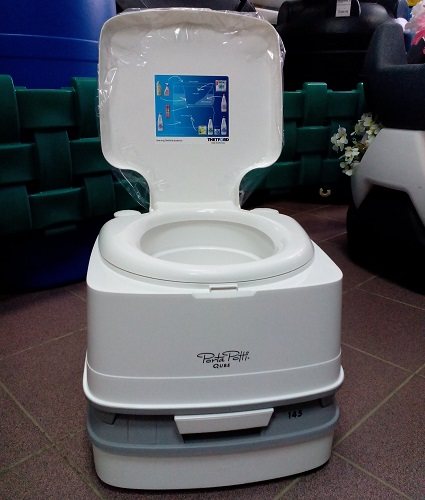
Also an excellent travel toilet for the whole family is the portable compact model Porta Potti Qube 165 Luxe Ivory , which is comfortable enough even for older people due to its thoughtful height.

And, of course, if you expect frequent trips to the toilet, be sure to buy an effective disintegrator for dry toilets Thetford Aqua Kem Green , which will dissolve waste in the shortest possible time and provide the latrine with a pleasant aroma.

What to do with toilet paper:
- Use the smallest pieces of toilet paper possible. To reduce your toilet paper use, you can replace it with natural resources such as large leaves (make sure they are not poisonous), moss, and even snowballs. The main thing is to take the selected material before getting started.
- Dispose of used toilet paper or natural alternatives in the trash, or better yet, bag the paper in a waste bag.
- Wet wipes can be handy when hiking. However, do not throw them into the dug hole. Such wipes should always be placed in a special bag so that you can later throw them away at home in the appropriate container (the same applies to pads and tampons).
How to cover up your tracks:
- Cover the waste (including toilet paper, if you do not take it away in a special bag) with soil until the hole is completely covered. Pack the ground with your foot. Place a stone or throw branches over the hole to prevent wild animals from digging it out. You can also stick a vertical stick into the hole to discourage future tourists.
- And of course, don’t forget about antiseptic hand gel; Rub it thoroughly into your hands, paying special attention to your fingers.
Insects
Ticks. Check your body daily for ticks. Ticks are carriers of dangerous diseases: encephalitis, borreliosis. Most often they stick in places with delicate skin: armpits, groin, area around the ears, scalp. If you find a tick, if you do not have the skills to remove it yourself, contact an instructor or a field doctor. Do not throw away the tick, bring it to civilization and take it to the hospital for examination.
Mosquitoes, midges, midges. Take repellent and anti-itch ointment “Fenistil” with you. In regions with an abundance of midges and midges, mosquito hats with a fine mesh will help.
Wasps, bees, hornets. If you are allergic to these insect bites, take antihistamines with you. They are also available in the public first aid kit if an allergy occurs unexpectedly.
You will truly enjoy the hike if you feel good. We are guaranteed good health when there are no health problems. And health and hygiene always go hand in hand, especially when traveling. So always wash your hands before eating, wash your socks and enjoy nature!
How to Maintain Hygiene While in the Wild
Unwashed hands can lead to intestinal diseases both during and after the hike. The following tips will help you keep your hands clean when there is no water source nearby:
Secrets of personal hygiene:
- Always take antiseptic gel with you (or wipes. But remember that they should not be thrown away in nature). Use it after every trip to the toilet and before handling food. Of course, soap and water will help clean your hands much more thoroughly. Although, by performing the same actions with an antiseptic gel, you can achieve a similar result.
- While hiking, you should wash your hands thoroughly with soap and water at least once a day.
- Dry your hands with a separate towel.
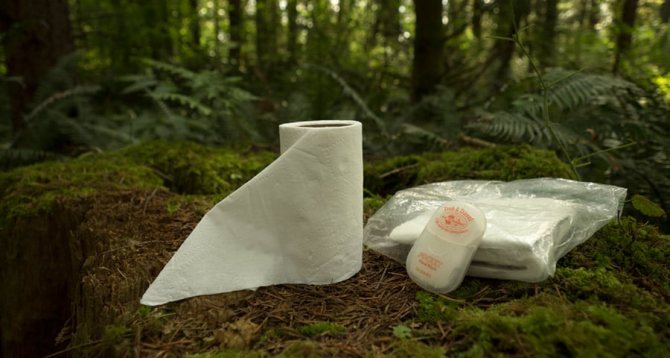
Keep the environment clean:
On longer hikes, you'll definitely want to treat yourself to a full body wash, or at least a dip in the nearby body of water. The following tips will help you keep the environment clean:
- Never lather directly in a river or stream. Even biodegradable soap can harm aquatic life.
- Use a camp sink (or pot) to carry the wash water at least 60 meters from the water source.
- Use only biodegradable, unscented soap.
- Before swimming, remove sunscreen and bug spray from your skin; these chemicals can be toxic to small bodies of water.
- Pour the dirty water remaining after washing onto the ground, not onto plants or moss-covered stones.
- Take a small, quick-drying compact towel with you on your hike.
Vladimir June 17, 2020 at 00:25 #
Yo-moe. And if there is nothing. The industry is dead. It's an apocalypse, so how can you wipe your ass while living outdoors or in the forest?
Ecology
When thinking about your cleanliness, do not forget about the purity of the surrounding nature! Do not leave anything in the forest or mountains that cannot decompose within a season. This includes sanitary pads, wet wipes, cotton swabs, baby diapers, packaging for disposable shampoos and contact lenses, adhesive plasters, and batteries. You can leave toilet paper, cotton pads and tampons, but not in plain sight.
Don't throw leftover food into glacial lakes. Due to the low temperature and the fact that there may not be fish there, the food will take a long time to decompose, “delighting” other tourists with its appearance.
Remember that after us only footprints in the sand should remain.

Buying Tips
If you go camping frequently, then it is probably worth choosing the best composting toilet for camping. While you may not mind doing business in the wild, it's still great to have the comfort, convenience, and ease that a portable toilet provides.

Portable camping toilets are relatively inexpensive, hygienic and easy to use. It makes sense to invest in them for picnics, hunting, fishing and hiking. There are many different options on the market, and we've researched dozens of them to find the ones that work best.
Without further ado, here is your list of the 10 best portable toilets for 2020.
Review of the best camping toilets
Brushing our teeth while hiking
It is recommended to take your own toothbrush and toothpaste on the hike. You can clean the day with the same frequency as outside camping conditions - morning and evening, according to hygiene rules (Figure 5).
It should be noted that it is advisable to take water for washing not from a standing source and be sure to boil it before use. This will help protect yourself from the risk of being infected with E. coli or other dangerous microorganisms.
If you don't have a brush, you can clean your teeth by squeezing the paste onto your finger. In the absence of paste, you can use conditionally pure absorbent materials - coal, ash, tree bark. However, in order not to repeat this difficult experience of our ancestors, travelers are still advised not to forget their toothbrush and toothpaste, as well as other hygiene products, especially for women.

Figure 5. A toothbrush can be successfully replaced with a twig.
A small and unpleasant detail in the field can be food stuck between the teeth, which is quite difficult to remove. But in order not to take toothpicks or dental floss with you, and especially not to look for a suitable spike or stick among the grass, you can use a regular knife to sharpen a match, giving it the shape of a toothpick, and thereby solve this problem.
Washing things on a hike
Washing and reusing things becomes a problem on a long hike or expedition. Naturally, you won’t carry a pack of washing powder in your backpack to do laundry.
It is better to wash things by hand in running water; you can use salt or soda as a detergent, which are in any hiking backpack (Figure 7).
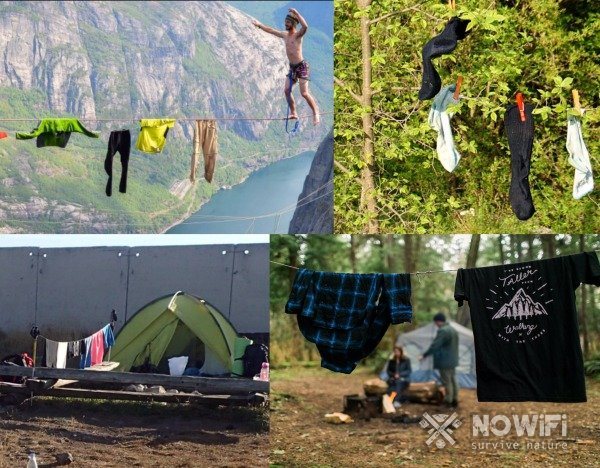
Figure 7. Washing clothes is an important part of hygiene
Washed items can be quickly dried in three ways: in the wind, in the sun or by the fire. When choosing the latter, you must ensure that an open flame cannot in any way reach your belongings. But the first two methods will come in handy if you need to dry things without spending the night.
Personal hygiene rules when traveling
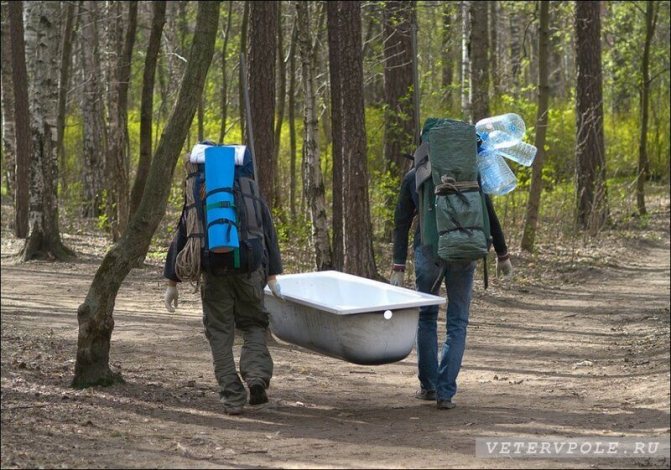
When hiking, you should always take the opportunity to get yourself in order. While driving, you sweat and road dust and dirt stick to your skin. If you touch your face, rub your eyes and eat food with dirty hands, you can easily get inflammation of the eyes or an upset stomach.
It is advisable to wash your hands before any snack.
If you approach a river or stream, you should wash your hands, face and neck thoroughly. If time permits, it would be a good idea to wash your feet and change your socks. After water treatments and a little rest, it will be much easier and more pleasant to continue your journey.
If you plan to stop for the night near a river, you can and even need to wash all your dirty clothes and wash yourself thoroughly before going to bed. You need to get into your sleeping bag clean and change into fresh linen, then your sleep will be much more pleasant and you’ll get a better night’s sleep.

